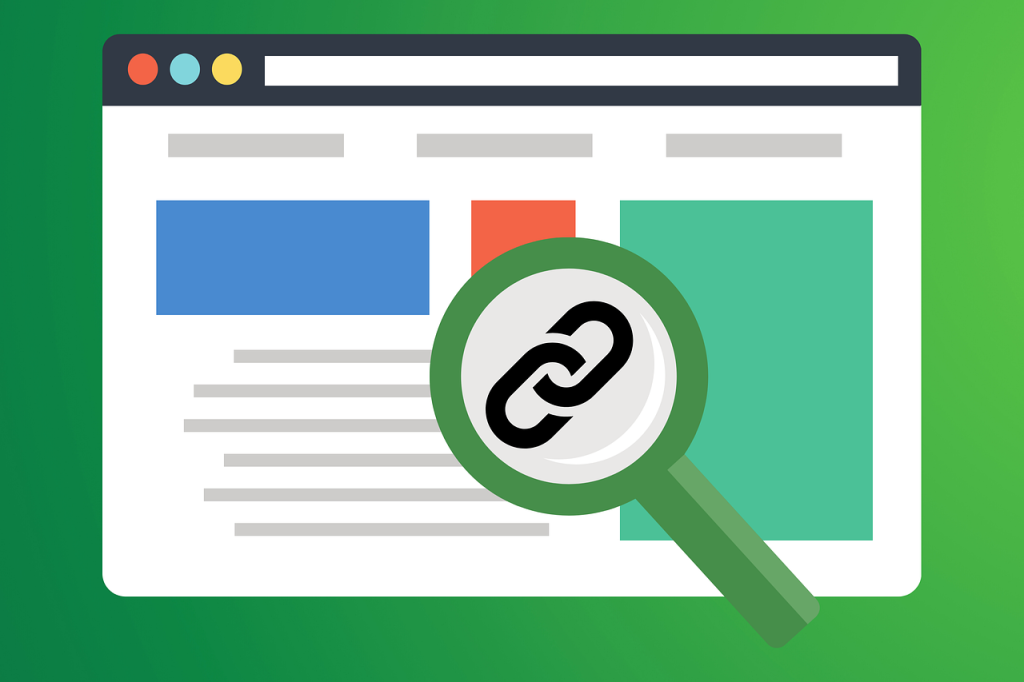
A solid presence on the internet is crucial for any company aiming to thrive in the modern digital era. Two key elements essential to success are: Search Engine Optimisation(SEO), and Backlink Building. SEO ensures that search engines can swiftly locate your website, boosting visibility and drawing in organic traffic. Backlink building elevates the website’s search engine ranks by establishing it as a reliable and trustworthy source. Here, we will explore the aspects of backlink building and SEO, providing useful advice and insights to maximise the website and accomplish online marketing objectives. This blog shall be useful for successfully navigating the complex realm of web marketing and promoting long-term business growth.

What is SEO?
Optimizing your website to rank higher on search engine results pages (SERPs) is known as search engine optimization (SEO). You raise the possibility of drawing in new clients and generating organic traffic by making your website more visible. SEO is the collection of methods designed to increase the visibility of your website both to search engines and to people.
Essential elements of SEO
- On-page SEO
To rank better and attract relevant traffic, individual pages are optimised using on-page SEO.
Important components:
- Keyword research: Find relevant terms that prospective buyers are using.
- Content optimisation: Easily accommodate keywords in an interesting, well-written manner.
- Meta-tag optimisation: Use target keywords in title tags, meta descriptions, and header tags.
- URL structure: Make concise, keyword-rich URLs.
- Internal linking: For enhancing SEO and navigation, include links to other pages.
- User experience: Make a user-friendly, mobile-friendly, and fast website.

2. Off-page SEO
This focuses on activities external to your website that affect your search rankings.
Important components:
- Building backlinks: Get quality links from trustworthy websites.
- Social media marketing: To increase the number of visitors and interactions advertise on social media networks.
- Guest blogging: Writing articles as a guest on other’s websites helps attract newer engagement and build backlinks.
- Ambassadors: For advertising purposes collaborate with influencers and celebrities.

3. Technical SEO
This essentially works on enhancing your website.
Important components:
- Site speed: The loading speed of the site is increased.
- Mobile optimisation: The website should be mobile-friendly.
- XML sitemap: Construct and submit an XML sitemap to the search engine.
- Robot.txt: Use the robot.txt file to direct the search engine crawlers.
- Structured data: For easier comprehension of your data for the search engine, utilize the schema markup.
Backlinks: What Are They?
Links from one website to another are called backlinks, sometimes referred to as inbound or incoming links. They are essential to SEO since they let search engines know that your website is a reliable and worthwhile resource.
Types of Backlinks
- Natural backlinks: Organic backlinks are earned when other websites choose to connect with them because of our high-quality content.
- Manual backlinks: Acquired as fruits of your efforts like guest blogging and outreach.
- Self-created backlinks: Made through putting links in user profiles, blog comments, or public forums, though these require caution since they’ll be considered spam if overused.

How Important Backlinks Are for SEO
It is impossible to overstate the significance of backlinks in marketing efforts. Any effective SEO plan must include backlinks, which are the process of creating links from one webpage on your website to another. Backlinks not only help your website rank higher in search results, but they also show search engines that your website is a reliable and trustworthy source of information.
But when it comes to backlinks, a number isn’t enough—the caliber of your connections is just as important. Therefore, anyone wishing to increase their web visibility must obtain high-quality backlinks.
What links mean for search engines
Search engines utilize links in 2 ways mainly:
- To find fresh websites to then include in their search results.
- To estimate a page’s position in the results.
After the websites have been crawled, search engines may extract the data and add it to the indexes. This is how they decide whether an article is of high calibre, to be highly ranked for pertinent keywords. Both the quantity and quality of links connecting to the page from other websites are taken into consideration in determining this, along with the content quality. A website’s chances of ranking high in the results increase with the number of reputable websites connecting with it.
The development of PageRank, a ranking algorithm based on the number of links leading to a page, was credited with helping Google dominate the search engine industry in the late 1990s. This statistic served as a powerful signal for assessing a page’s quality and was incorporated into the overall ranking algorithm. Google’s algorithmic integration of this allowed them to deliver more pertinent and helpful search results than their rivals. According to PageRank theory, links are interpreted as a vote of confidence that demonstrates the value and quality of a website.
Building high-quality Backlinks

- Create quality content: The primary step in obtaining high-quality backlinks through SEO is by producing excellent content. The increase in backlinks from other websites is likely if your content is valuable and educational.
- Guest blogging: As mentioned above, this is one of the important tactics for SEO. Attach the link to your website in the blog or in the author bio to attract the readers to your blog, but take care that the website you are appearing for is relevant to yours and under your niche.

- Broken backlink building services: This is the technique for mending broken links on other websites with your links. It will require a lot of research for you to find a broken link in your field. You can then offer them link-building services by replacing the broken ones with your good quality content.
- Use infographics: Using infographics is the best strategy for acquiring quality backlinks. Once an infographic is created, you can provide a code so other websites may use it to embed it on their own pages. One way to increase traffic to your website is by including a link to it in the code.
- Directories and listings: Include your website in applicable business listings and online directories. Verify that Google My Business and local directories have listings for your company.
Analysing and tracking the SEO and Backlinks
Maintaining and enhancing the search engine performance needs consistent monitoring and analysis of the SEO and Backlinking activities. Monitoring development, detecting errors, and adapting to evolving trends require a variety of tools and techniques.
- SEO Resources
Understanding the functionality and user engagement of your website starts with utilizing the SEO tools aptly. One such tool for monitoring visitors and their activities is Google Analytics. It provides important data like user engagement, frequently visited pages, and the source of traffic. This information helps you determine what works for your website and where there is scope for improvement.
Another crucial tool that lets you track how well your site performs in searches, upload sitemaps, and find and address problems is Google Search Console. By giving you useful data on search terms, click-through rates, and indexing status, you can improve the exposure of your website. Furthermore, for tracking keyword ranks, doing site audits, and evaluating backlinks, tools like Ahrefs, SEMrush, and Moz are priceless. With the abundance of capabilities these all-inclusive tools provide, you can remain ahead of the competition and keep up a strong SEO profile.

- Monitor Backlinks
For SEO to be successful, a robust backlink profile must be maintained. It is crucial to examine the amount and quality of backlinks. Ahrefs and Moz are two examples of tools that can track site links, assess their strength, and spot bad ones. Use Google’s Disavow Tool to remove any hyperlinks that are suspected of being spammy or poisonous. Effective SEO campaigns and the development of your site’s authority are ensured by routinely assessing and maintaining your backlink profile.
- Adjust Strategies
In order to assess and modify tactics depending on data such as natural traffic, bounce rates, and conversion rates, SEO has to be continuously improved. It’s critical to keep up with SEO trends and algorithm changes since search engines like Google often change their algorithms, which affects site rankings. Best practices and industry insights may be obtained by participating in blogs, forums, and SEO communities. Digital marketers may ensure long-term success by making educated judgments based on the monitoring and analysis of SEO and backlink activities.
Conclusion
Organic traffic is created when there’s improved website exposure and backlinks. Backlinks are crucial for SEO, as they can improve search engine rankings and drive organic traffic. However, ethical practices are essential to avoid penalties and lower rankings. The quality of backlinks is more important than the quantity, and multiple low-quality backlinks can be harmful. Staying updated with SEO practices is essential. Prioritizing high-quality content attracts other niche websites to backlink. Keep in mind that SEO is an ongoing process that has to be regularly monitored, analyzed, and adjusted in order to be effective.
